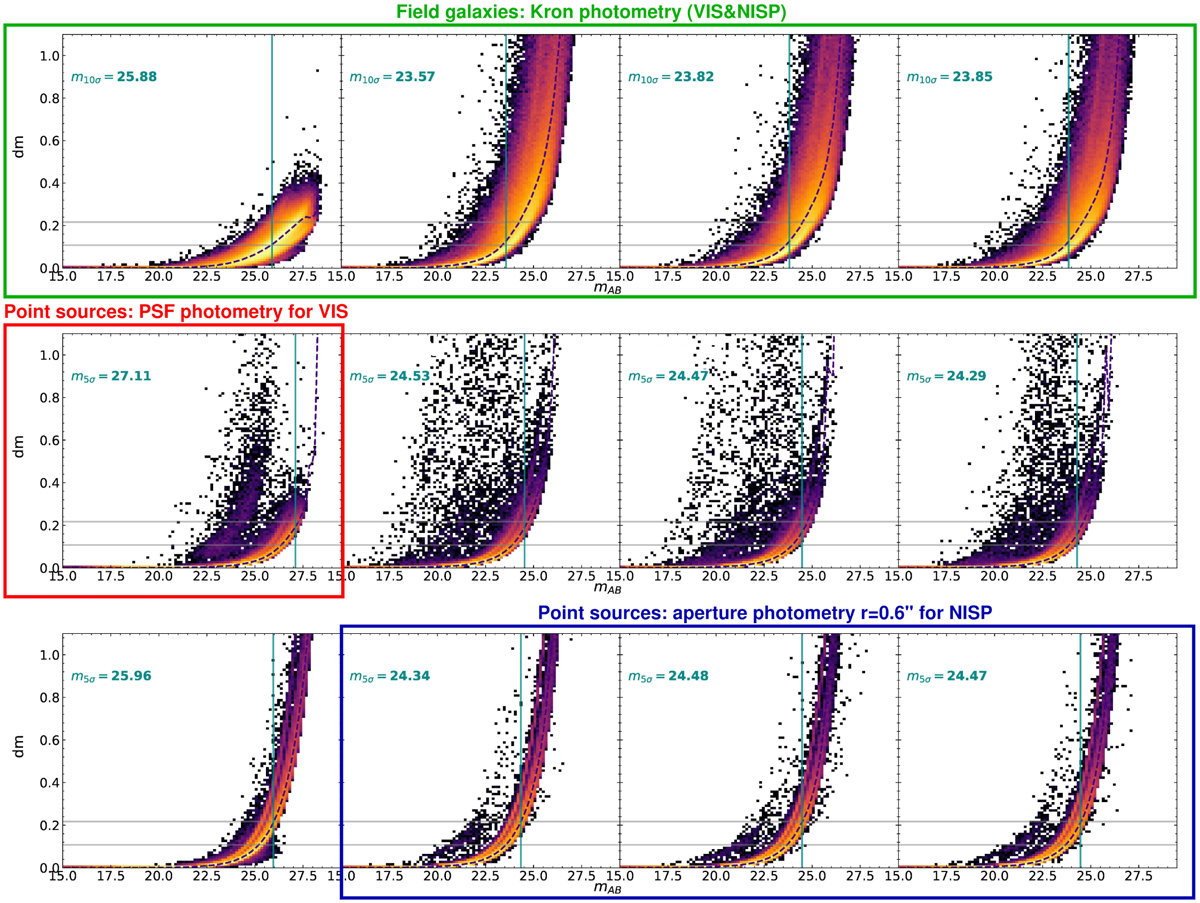Fig. 22

Download original image
Depth metrics for evaluating the performance of the ERO catalogues based on the photometric measurement error reported by SourceExtractor. The plot order from left to right is IE, YE, JE, and HE. Top row: field galaxies Kron photometry. SourceExtractor’s MAG_AUTO (Kron magnitude) provides the most accurate estimate of the total magnitude for galaxies in both VIS and NISP, using a conservative threshold of CLASS_STAR = 0.65 for star-galaxy separation (statistics from the ERO Abell 2390 field). Middle row: point sources PSF photometry for VIS. For stars, the VIS resolution facilitates effective separation of objects using SourceExtractor’s PSF-fitting photometry (MAG_PSF). However, this method is less effective with NISP, which tends to blend objects because of its coarser pixel scale, as evidenced by the scatter in comparison to VIS results; it also underestimates the photometric error on compact sources compared to aperture photometry (statistics from the ERO NGC 6397 field, also used on the bottom plot). Bottom row: point sources aperture photometry for NISP. A 1ʺ.2 diameter aperture is used for all objects in NISP (SourceExtractor’s MAG_APER), with the fitting tool selecting the deepest part of the distribution on the right, primarily composed of stars. An aperture correction is then applied to the numbers derived from such analyses, based on our analysis of enclosed energy (offsets: YE = –0.130, JE = –0.167, and HE = –0.249; refer to Table 1 for the aperture corrected values for NGC 6397 here).
Current usage metrics show cumulative count of Article Views (full-text article views including HTML views, PDF and ePub downloads, according to the available data) and Abstracts Views on Vision4Press platform.
Data correspond to usage on the plateform after 2015. The current usage metrics is available 48-96 hours after online publication and is updated daily on week days.
Initial download of the metrics may take a while.


